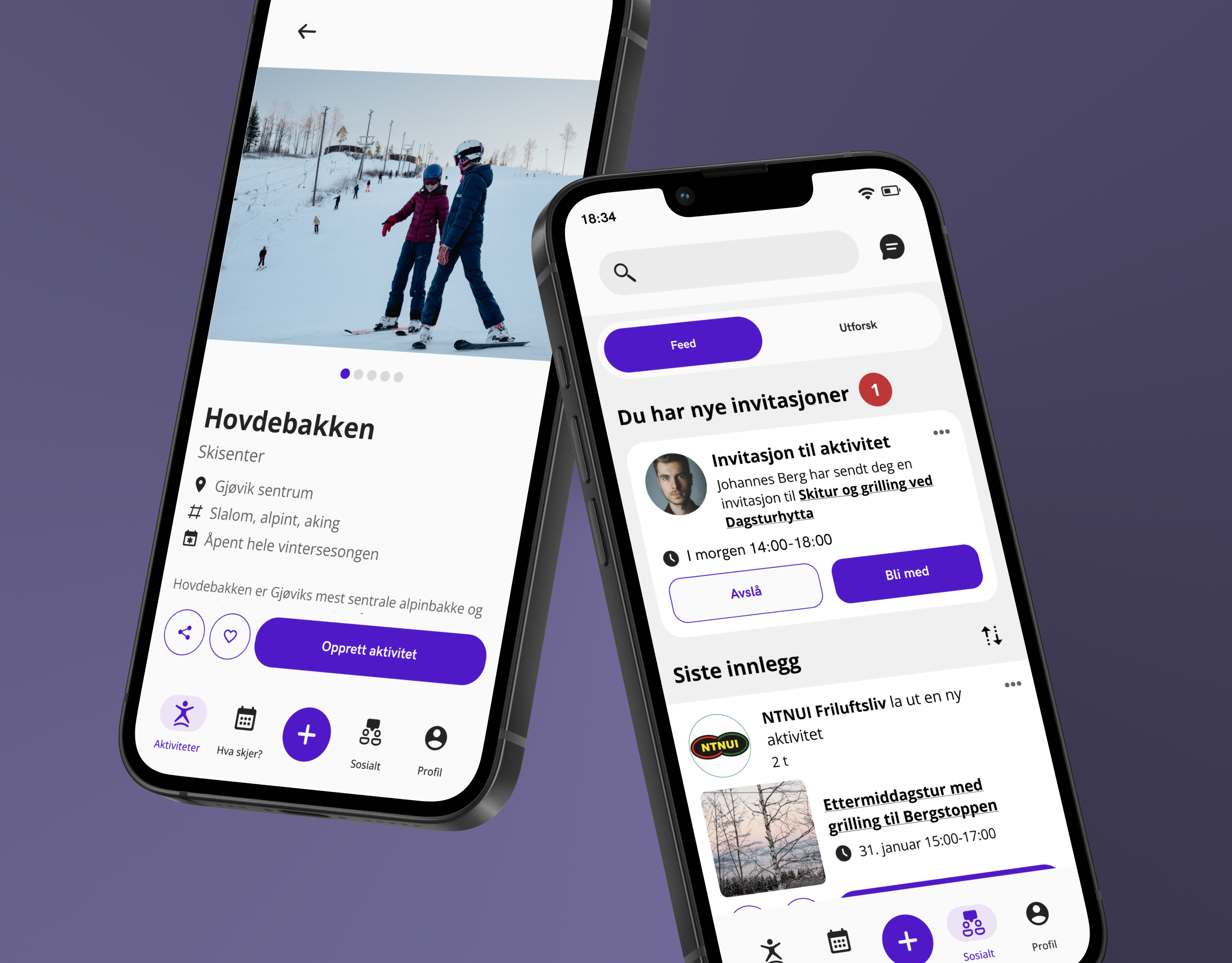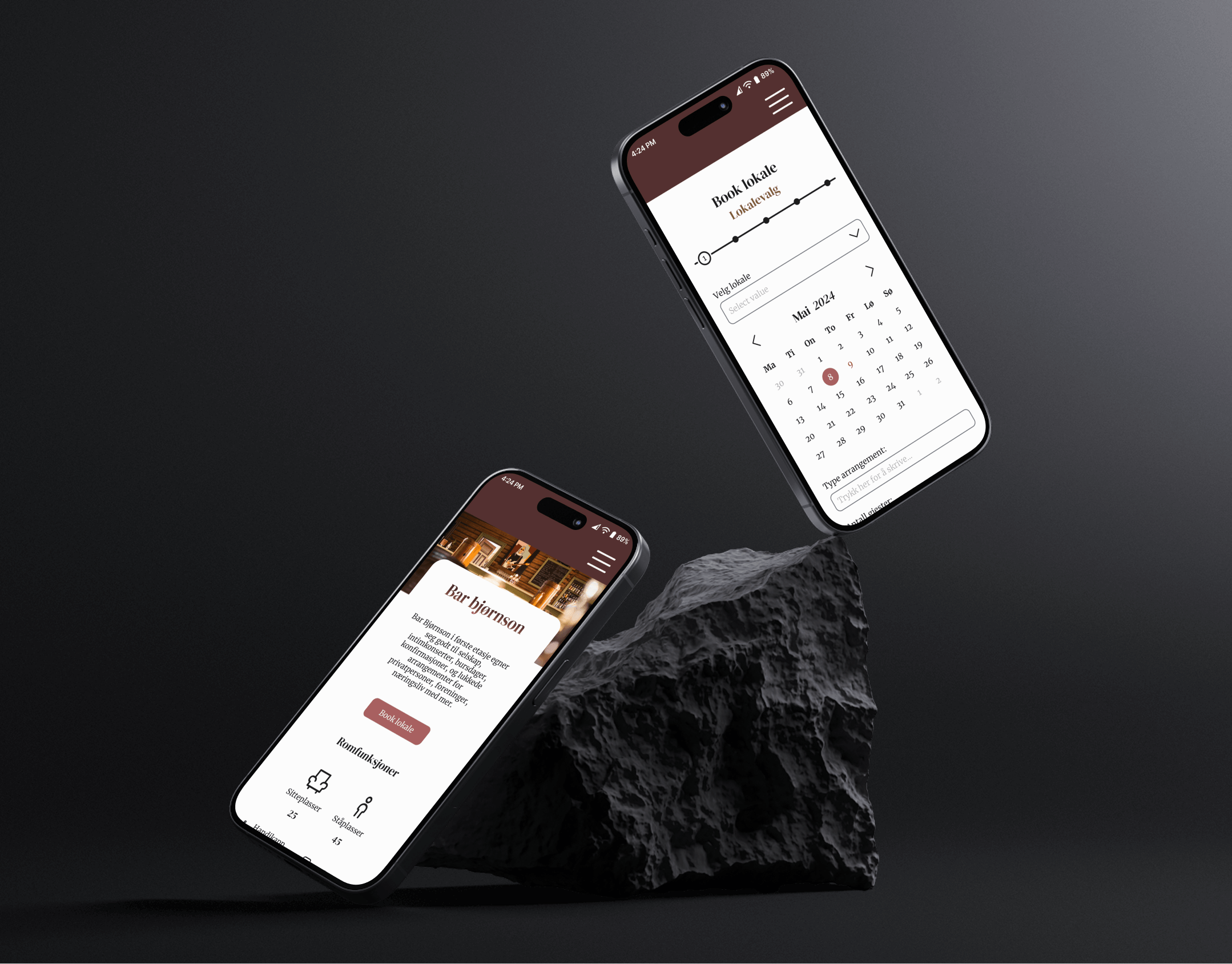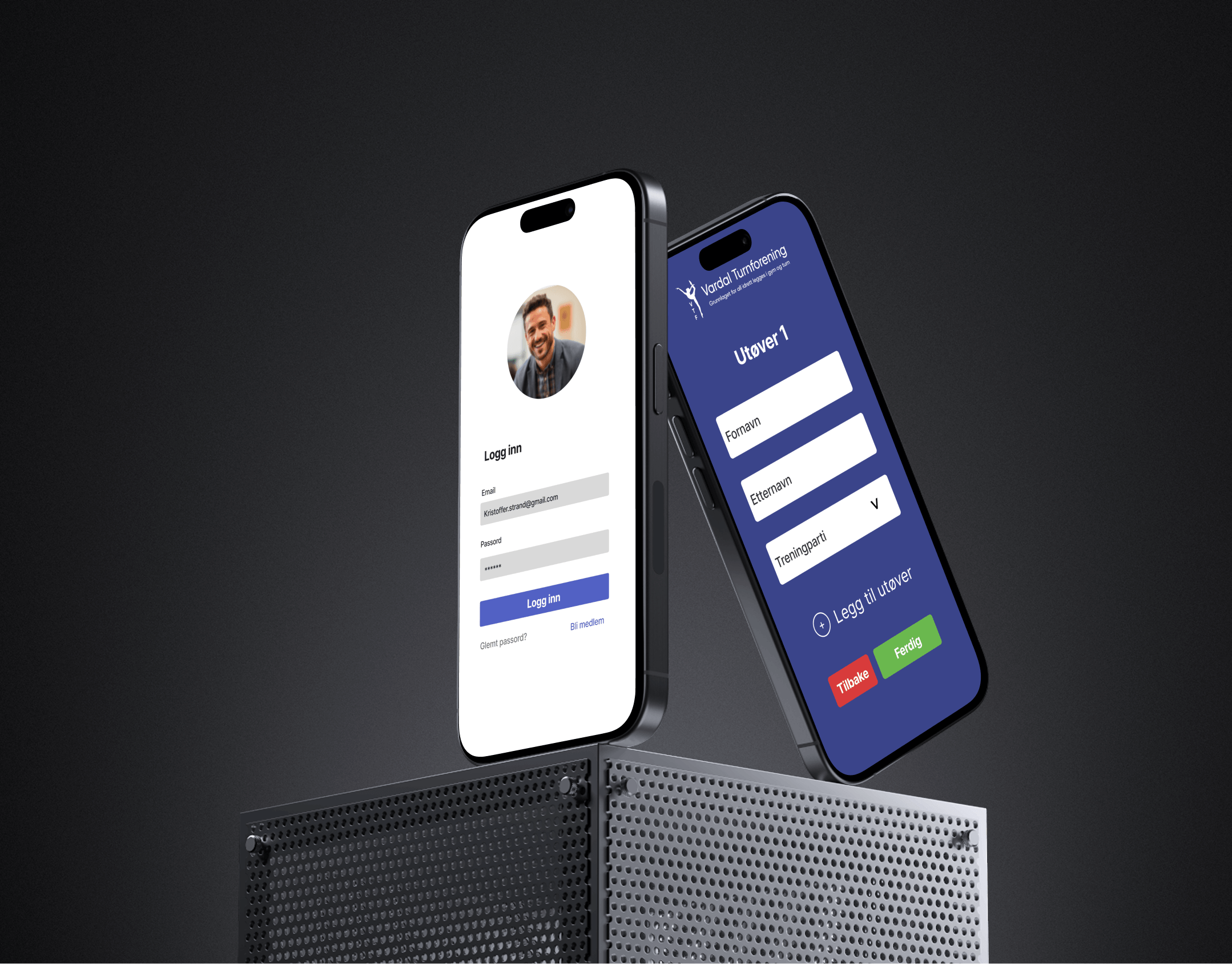Digital Sustainability Reflection Tool for Design Students
Project type
UX-design
UX-design
Time
Spring 2024
Spring 2024
Tools
Figma
Figma
Team
5 UX-designers
5 UX-designers
The problem
NTNU (Norwegian University of Science and Technology) wants to integrate sustainability more actively into students leaning plans. Currently, many students show little awareness or reflection around sustainability, and is often only considered when directly required by an assignment.
The solution
A digital reflection tool with gamification elements that makes it easier and more engaging for students to learn about and reflect on sustainable design choices.
Most central in this solution is LoRE the Cat - a lecturer figure who must be “fed” with student reflections. If the students fail to submit reflections, LoRE will get upset.
Design Process
• Empathize: User interviews
• Define: Affinity map, personas, empathy map
• Ideate: Workshop, crazy-8, 5-2-5, flip-the problem
• Prototype: Wireframe, low- and high-fidelity prototyping, service blueprint
• Test: Evaluation
• Define: Affinity map, personas, empathy map
• Ideate: Workshop, crazy-8, 5-2-5, flip-the problem
• Prototype: Wireframe, low- and high-fidelity prototyping, service blueprint
• Test: Evaluation
Research & insights
We interviewed both students and educators at NTNU to understand their needs:
• Students felt unsure about how to reflect meaningfully on sustainability.
• Educators lacked tools to integrate these topics into their teaching in a lightweight and engaging way.
• Both groups expressed interest in creating space for dialogue and feedback around sustainable practices.
• Educators lacked tools to integrate these topics into their teaching in a lightweight and engaging way.
• Both groups expressed interest in creating space for dialogue and feedback around sustainable practices.
Personas
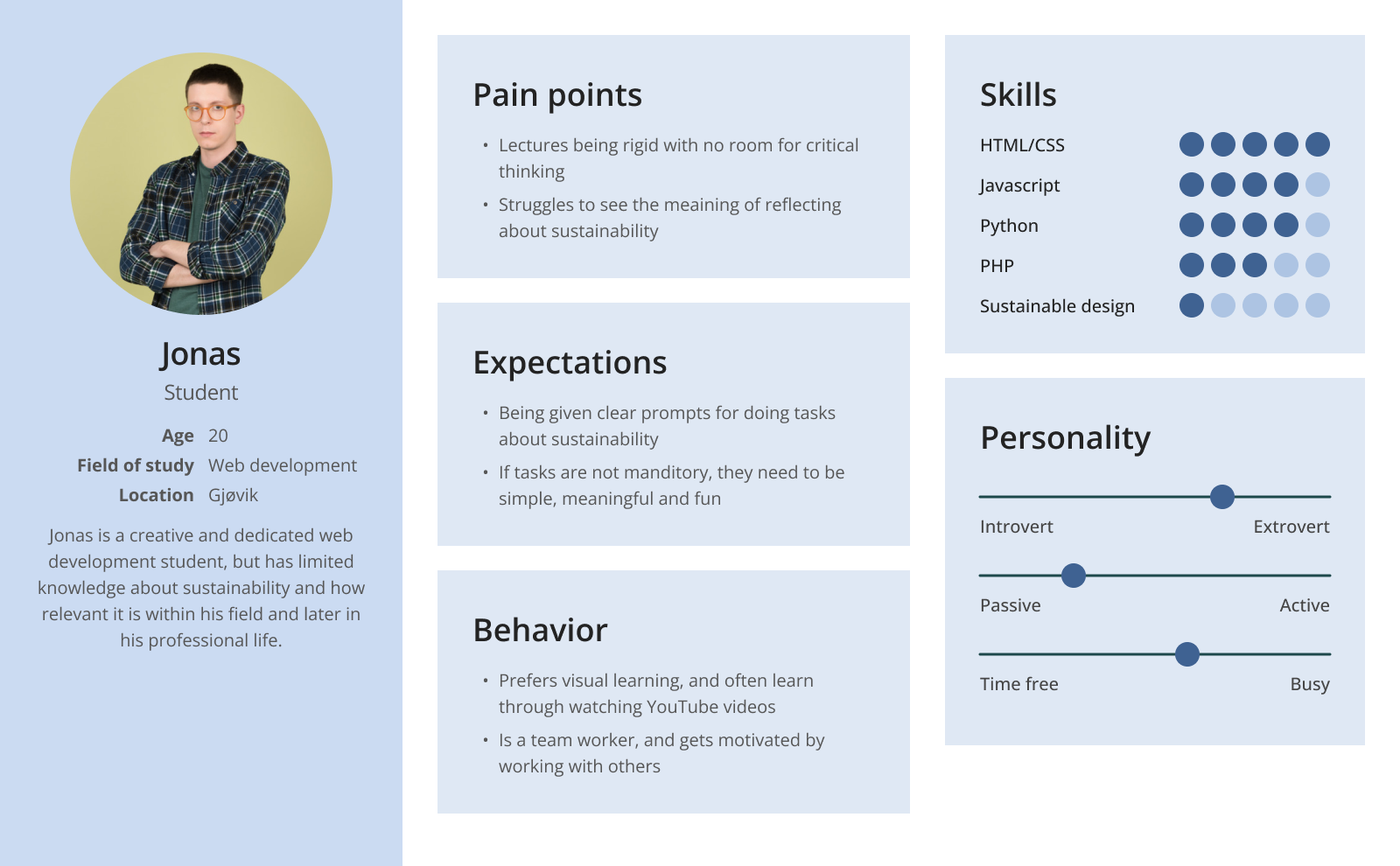
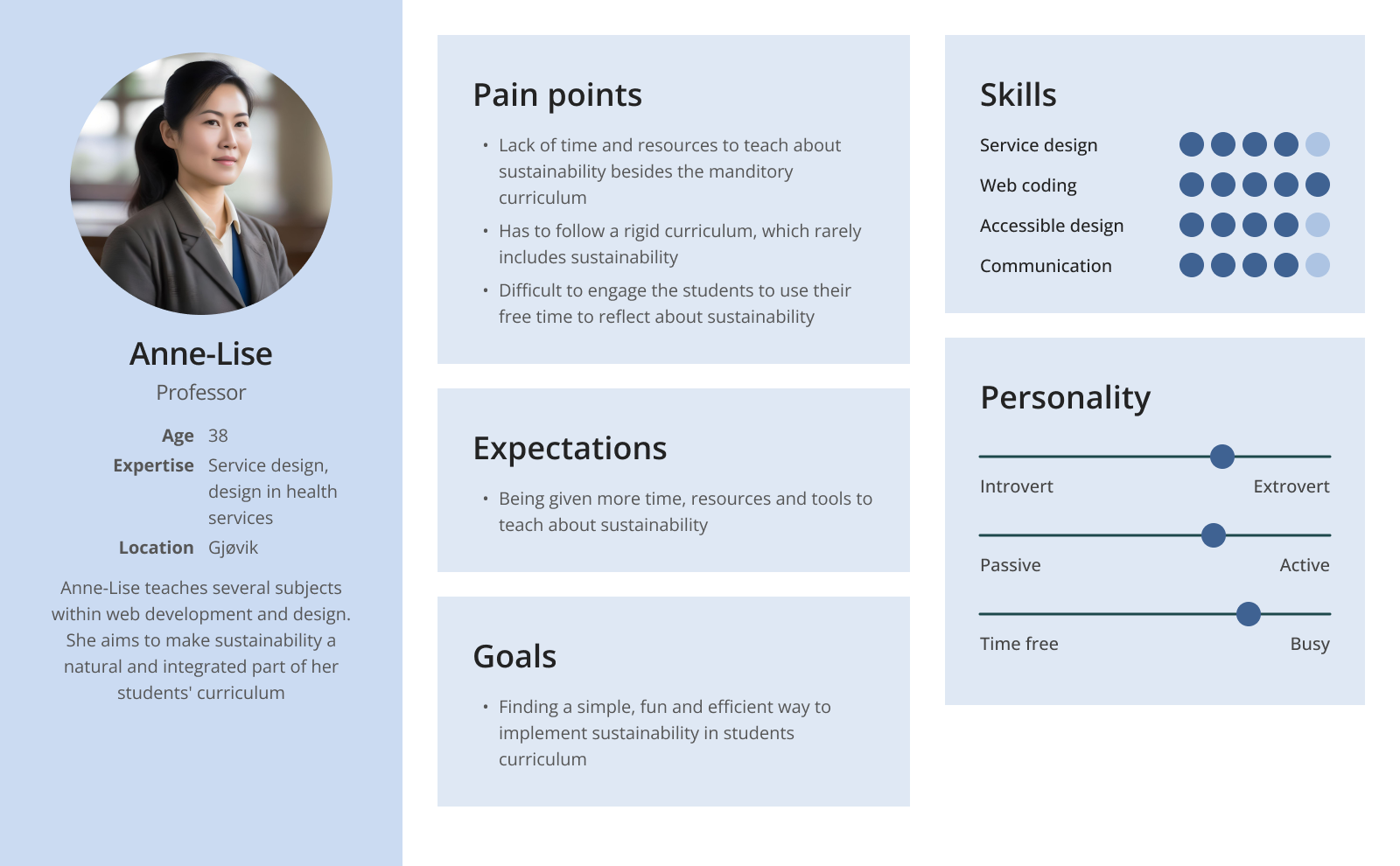
We created two personas - Jonas and Anne-Lise - that illustrates the behaviors, challenges, and interests of both students and lecturers
Ideation & concept development
We began the ideation phase by generating several How Might We-statements based on insights from our research. These framed our core challenges around student motivation, teacher involvement, and making reflection a natural habit.

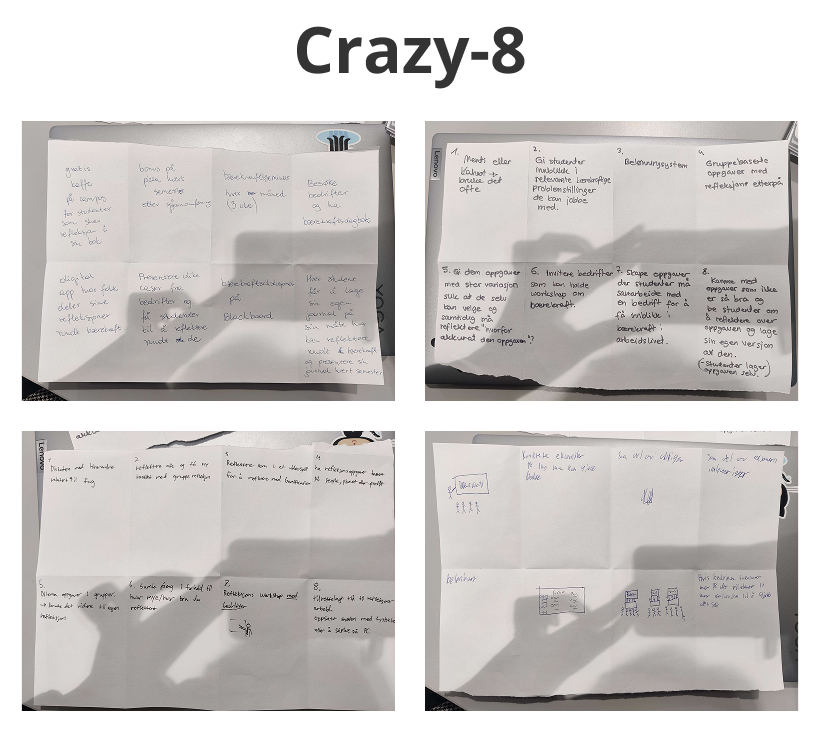
For idea generation, the group used methods such as Crazy-8 (each participant generates 8 ideas within 8 minutes) and 6-3-5 (6 participants generates 3 ideas each within 5 minutes).
As the workshop resulted in a large number of ideas, we used a combination of quick idea grouping (inspired by the “Benny Hill sorting” method) and dot voting to identify the most promising concepts.
The winner ideas from the Benny Hill-sorting and dot voting were the following:
1) Reward systems (prices, leader boards, etc)
2) Workshop with companies
3) Feedback systems
4) Companies creates assignments
2) Workshop with companies
3) Feedback systems
4) Companies creates assignments
Prototyping and design
Following the ideation phase, we began developing a digital reflection tool with gamified elements — a process that eventually evolved into the concept of LoRE.
During the early prototyping phase, I was responsible for designing the social features of the tool, including the user feed and forum. Since the overall concept was still in its early stages, these initial prototypes were relatively generic and primarily served as a starting point for further development.
Final product
In the final concept, several core features were designed to make sustainability reflection more engaging and social for students. It includes the following core functions:
• The character LoRE the Cat, a virtual lecturer figure who encouraged students to submit reflections by “feeding” it with their submission
• A reflection page with guiding prompts, helping students articulate their thoughts around sustainable design in a structured way.
• A leaderboard showcasing active participants
• An online forum allowed students to share reflections, exchange feedback, and connect with peers. It also enables for a stronger sense of community and collaboration.
What I've learned
• Basic principles of service design and how to approach challenges holistically
• Using tools like service blueprints to visualize behind-the-scenes processes in a user journey
• How gamification can be used effectively to boost motivation and engagement
Further development
• Adapt the design to be being fully mobile-friendly, ensuring accessibility and ease of use across different devices
• Further explore how the platform can foster a positive and meaningful user experience beyond external rewards, by supporting intrinsic motivation factors.

